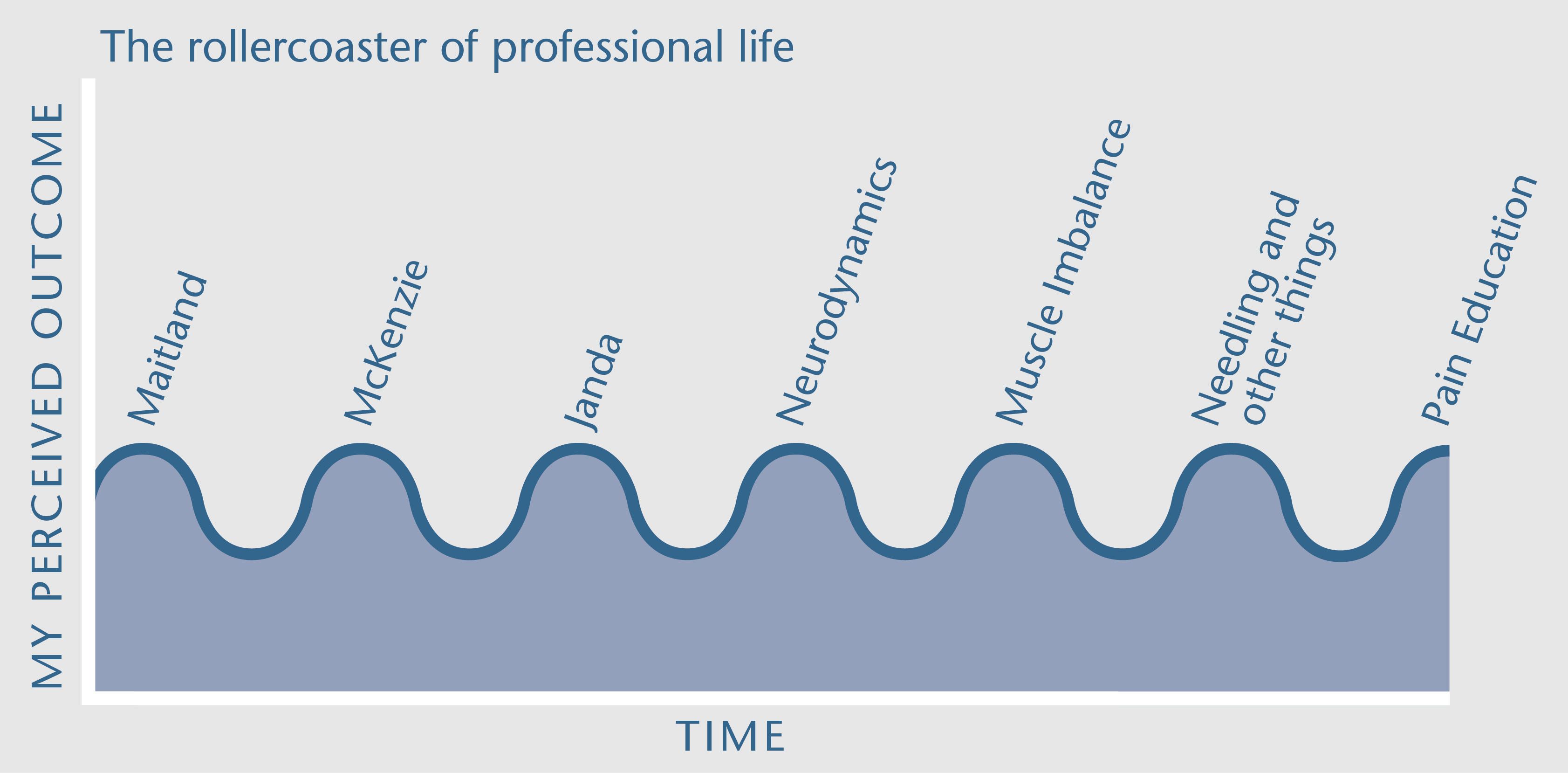This was a great Facebook post by Lars Avemarie! 🙂
He talks about the fact that we, physiotherapists, are very focused on getting more “tools” in our toolbox and that we shouldn’t get so fast on the Modality Rollercoaster.
Maybe we have to take a different route as a profession… more based on sound clinical reasoning skills, better communication with ourselves and with our patients (avoid nocebic terms etc.), more knowledge about evidence based practice, strength and conditioning and how to properly load our patients.

After asking Lars, he let me post this on the Trust me, I’m a Physiotherapist website. Check out his Facebook page and website, where he shares a lot of good stuff! 🙂
Here you can read the original post on Facebook.
Toolbox
There is a great problem in physiotherapy, that is that most people are modalities driven, and only focused on stuff they can put in their toolbox.
I see a lot of young physios falling prey to this mindset, and taking dry needling courses (or other courses) just because other peers are taking them. This without any hard critical thinking or reading the research, or thinking about if the “tool” or modality makes sense, and if the modality are plausible enough to put in the “toolbox”.
“I am curious yet skeptical about most things in this profession, especially the things that are said to add to our ‘tool box‘, the so called ‘adjuncts‘ to treatment. However, in my experience, these often end up being nothing more than a waste of time, energy, and money, and more importantly they usually end up eventually being found clinically ineffective” Adam Meakins

Rollercoaster
This mindset (and problems of it) is something David Butler talked about in his great article “The Rollercoaster of Professional Life”, and something Adam Meakins, Martin Bonnevie-Svendsen, Nick Tumminello have touched upon.
“Building your practice on a single intervention means you float or sink with the therapeutic effect of said treatment. Considering the substantial evidence on therapeutic tools and their effect sizes, this is like betting your house on red 21 at the roulette table” Martin Bonnevie-Svendsen
“I look around now at the course advertisements in the back of the journals and it seems the new roller coaster is driven by dry needling and someone called Pilates. No doubt some people are flying with it, and good on them, but not me – I am too war weary to get on the roller coaster again” David Butler

Picture from the NOI Group website from a blogpost written by David Butler.
What to do then?
“The successful fitness professional understands that their job is to serve as an exercise expert, not as a specialist in using only one training modality” Nick Tumminello
A lot of people have been asking for information on what to-do, I provide a lot of information on what not-to-do, but if you want to also learn what to-do, in my opinion a course is a great option, because of it requires a more complex understanding of the topic, and a course is a great way to get you started.
Now, I am a really a firm believer in continuing education courses, but 95% of the courses are modality driven and/or not science based, and are of too low quality (IMO) to spend my time and money on them.
But the are some courses out there, I plan on taking myself, they are done by some great colleagues of mine. And they will NOT only take you on a ride with the modalities roller coaster, but they follow science and take a science based approach to pain management and physiotherapy.

Lars’s rule of continuing education courses: You should at least use half a day reading research and critically evaluating the topic, when you are considering going to a full day (or two) course, and pay a lot of money.
There are only like 5-6 coursed that I think are high enough quality, that I want to spend my time and money on them.
Courses that I do recommend, and that are Science-Based:
Adam Meakins’s The shoulder
Dr. Gregory Lehman’s Reconciling Biomechanics with Pain Science
Diane Jacobs’s Dermoneuromodulation
Ben Cormack’s Functional Therapeutic Movement
Prof. Peter O’Sullivan’s Cognitive Functional Approach
Prof. Lorimer Moseley’s Explain Pain Supercharged (or any other courses by NOI group)
And I also plan on taking some lectures by Todd Hargrove, Dr. Jason Silvernail, Dr. Jonathan Fass, Dr. Derek Griffin, Kjartan Vibe Fersum PhD, Christopher Johnson, Dr. Jarod Hall, Sigurd Mikkelsen, and Associate professor Roger Kerry PhD.
